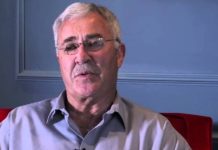
[miningmx.com] — SA has sacrificed its water for gold and gold has therefore become a curse as acid mine drainage is affecting the economy and health of citizens, says CEO of the Federation for a Sustainable Environment, Mariette Liefferink. Decant into the central business district in Johannesburg could happen in three to five years, she added.
She told the southern African internal audit conference on Tuesday that the Witwatersrand mining area – the largest gold and uranium basin in the world that has been mined by 120 companies for 120 years – was previously surrounded by pure water sources, but mine drainage had polluted many of these streams. She said mines had failed to abide by environmental standards and asked auditors to start taking account of the environmental impact and potential costs that arise once mines were closed.
SA has sacrificed its water for gold and gold has therefore become a curse as acid mine drainage is affecting the economy and health of citizens, says CEO of the Federation for a Sustainable Environment, Mariette Liefferink. Decant into the central business district in Johannesburg could happen in three to five years, she added.
She said more than 100 mine shafts in the central Rand area (just outside Johannesburg) were not closed, which was causing gas to escape and communities to live among this, leading to increases in lung cancer risks.
A recent study shows 50% of 47 sites contain elevated levels of radioactivity. This is being passed on to humans via milk from animals grazing in the areas, said Liefferink.
Now even construction in Johannesburg is being contaminated due to the use of materials, like bricks from radioactive areas. This is now evident in densely populated areas, according to research presented.
Uranium is reportedly now even being inhaled in the dust, which can have a radio toxic impact for 40 years.
She said audits should look at inappropriate developments being built opposite tailings dams as they could increase the liability for mines as well as for government.
She said desalination was the solution, though task groups were recommending neutralisation, which introduced lime which precipitated heavy metals but failed to protect water supplies.
But Liefferink said pumping and treatment was only part of the solution as diffuse sources of pollution, like the tailings dams, needed to be addressed too.
She calls for retrospective application of the “polluter pays” principle.
“The effects last for hundreds of years after a mine closes,” she said.
“What is reflected in a glossy [financial statement] does not account for social impacts.”
She said auditors should not only take operating costs into account, but post closure costs as well.
“The mine industry maximised it’s costs by externalising it’s costs onto communities.”
She also raised the concern being caused by new prospecting applications while water usage was already over-subscribed by existing mines.
“Mining companies must be held liable for historic costs and cumulative impact.”
Post closure decant is an enormous challenge as the mines left a legacy of highly toxic and unfenced tailings dams and a growing number of sinkholes.
She called for proper risk assessments to ensure inappropriate developments did not take place, with a recent one being closed and sold for a few million rand after costs of R240m.









